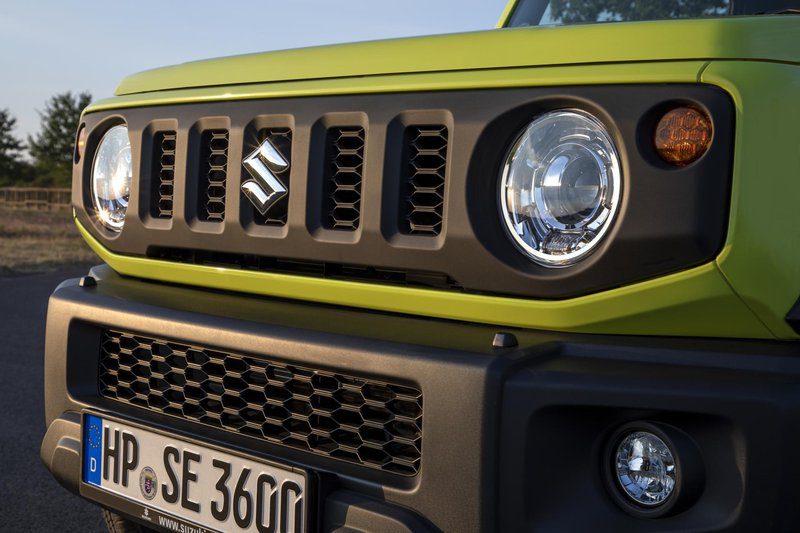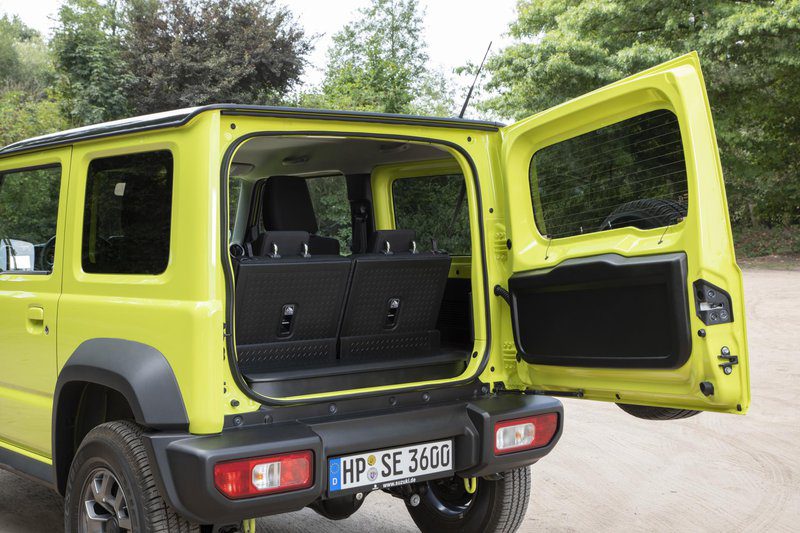
The Suzuki Jimny's mission remains clear and unchanged.
The new Suzuki Jimny means a return to another time. But not for the worse. The previous, third generation Jimny hit the road in 1998, 20 years ago, at a time when SUVs were not even talked about, and SUVs were mainly used for work in the forest, on more difficult terrain or in other similar events. And, as it turns out, the new generation intends to consistently follow and respect the legacy of their ancestors.
The first generation Jimny went on sale back in 1970 and Suzuki has produced more than 2,85 million vehicles to date. It is worth noting that there were much fewer buyers, since many of them, after buying the first one, decided to buy a small Suzuki, sometimes even a model of the same generation. This is not unusual, not least because the latest generation has been on the market for a full 20 years and, as we could see for ourselves, it is also adept at impressing in the field at the end of its life.

Whether it will be able to continue to maintain its authenticity even in the fourth generation, we wondered when some time ago the first information about the newcomer was posted on the Internet. The photographs were encouraging. The car brought a fresh look, but at the same time was based on the design of all three previous generations. Thus, the initial concerns have subsided after the recent European presentation in Frankfurt and have been replaced by high expectations.
It would be great if we write that Jimny remains Jimny, an off-road vehicle that does better in the field than on the highway. Last but not least, this is ensured by the extensively revamped chassis of the vehicle, which is 55 percent stiffer than its predecessor thanks to the X-shaped transverse bolsters. But that's just the foundation for a true SUV. Two-wheel drive, but only for off-road driving. An additional lever next to the gearbox is designed to choose between two-wheel and four-wheel drive, and depending on the terrain, you can choose between low and high gear ratios. Everything we expect from a true SUV. For hourly driving in the field, a new 1,5-liter gasoline engine with 76 kilowatts or 100 "horsepower" is used, which can be connected to a five-speed manual transmission or a four-speed automatic transmission. The driver was also assisted by systems for starting and descending, which automatically limits the car's speed to 100 kilometers per hour.

But even though it's a brand new car, the Jimny's interior, at least outwardly, doesn't live up to the modern standards that dictate soft lines and elegance. The driver will see a pair of analog gauges for vehicle speed and engine rpm (the bezels of which are attached to the rest of the dash with exposed screws!), including a black and white digital display. Its purpose is to display data such as current fuel consumption and the status of a 40-liter tank, as well as a few more advanced solutions such as road restrictions and even an accidental lane change warning. Yeah Al, that sounds pretty crap to me. Looks like Jimny's not for me either. Last but not least, the infotainment system next to the dashboard, which is touch sensitive and can be controlled by the driver using the buttons on the steering wheel, reminds us of this. And if we linger a little in the cabin: there's room enough for four adults if the front pair is a little versed in the longitudinal movement of the seats. The luggage compartment basically offers 85 liters of space, and by folding down the rear seats, the back of which is well protected from injury, it can be increased to 377 liters, which is 53 liters more than its predecessor.

Considering that the third generation Jimny still had a few customers in Slovenia and across Europe - sales have remained stagnant for the past 10 years - we have no doubt that the upcoming newcomer will also be warmly received. Unfortunately, we'll have to wait a little longer. The Slovenian representative does not expect the first samples to arrive until next year, and buyers will need to make an effort to acquire them as soon as possible, since the quantity that the Japanese factory will supply to Slovenian dealers will likely be limited to just a few. dozen cars a year. Those lucky ones who still get their cars will deduct a little less money for them than our western neighbors. Prices are expected to start around 19 euros, about 3.500 euros less than in Italy, and time will tell if the novelty can last on the market for at least about as long as its predecessor.


